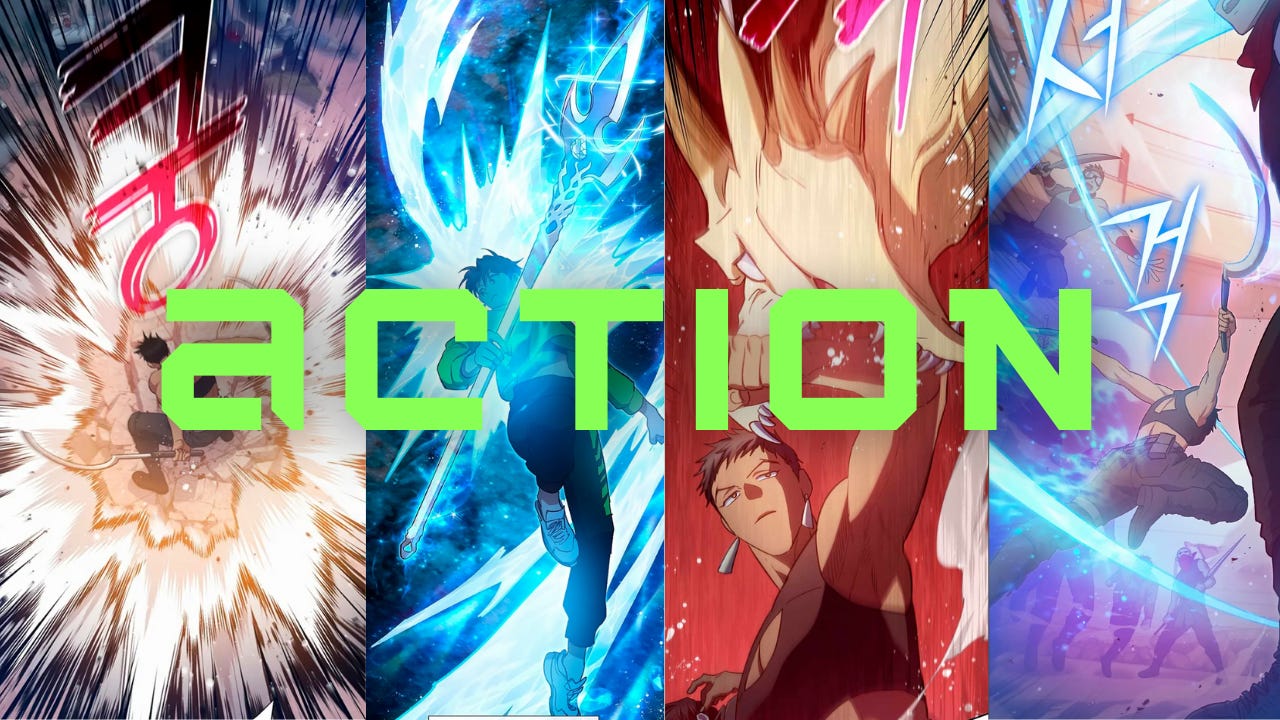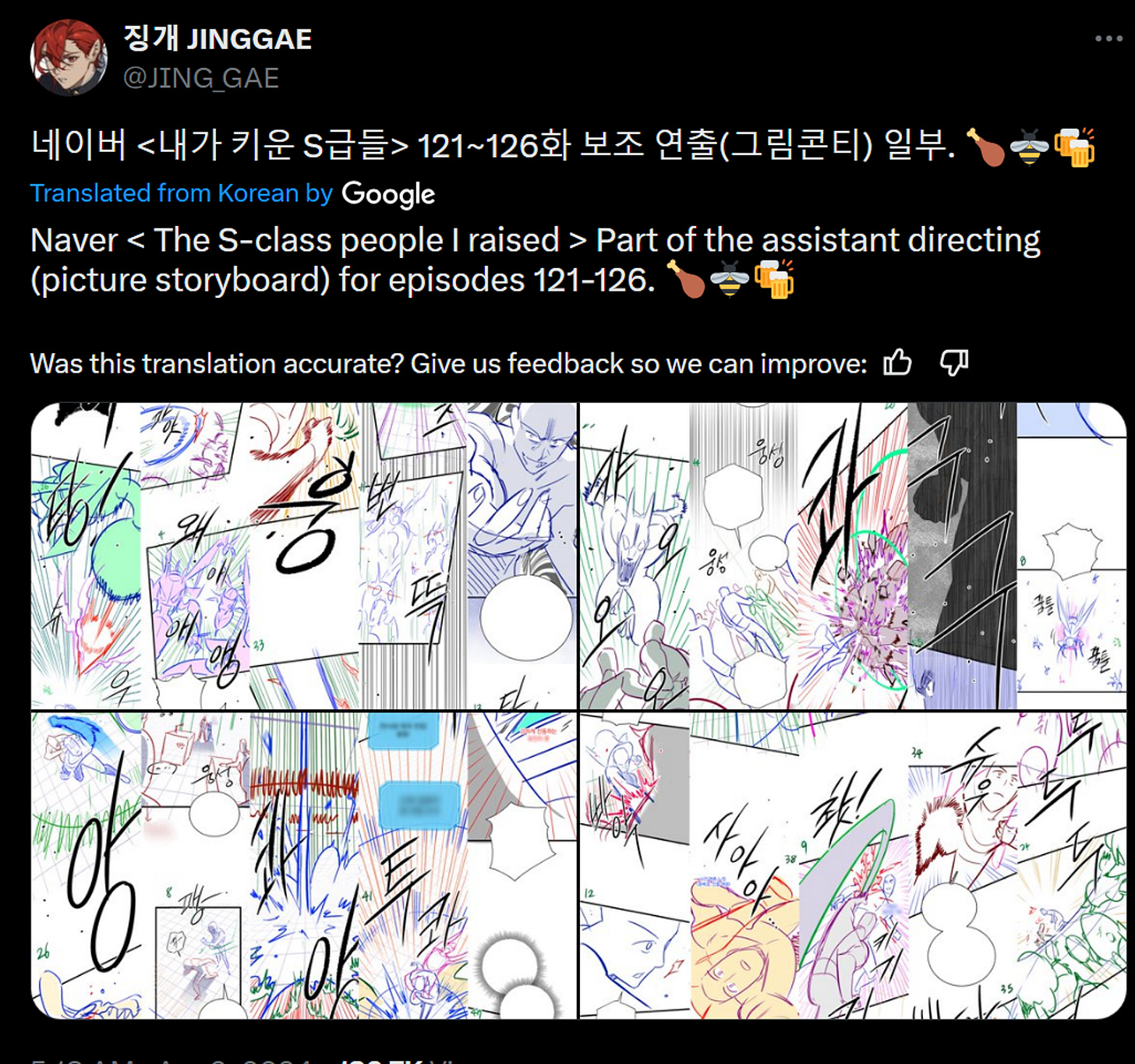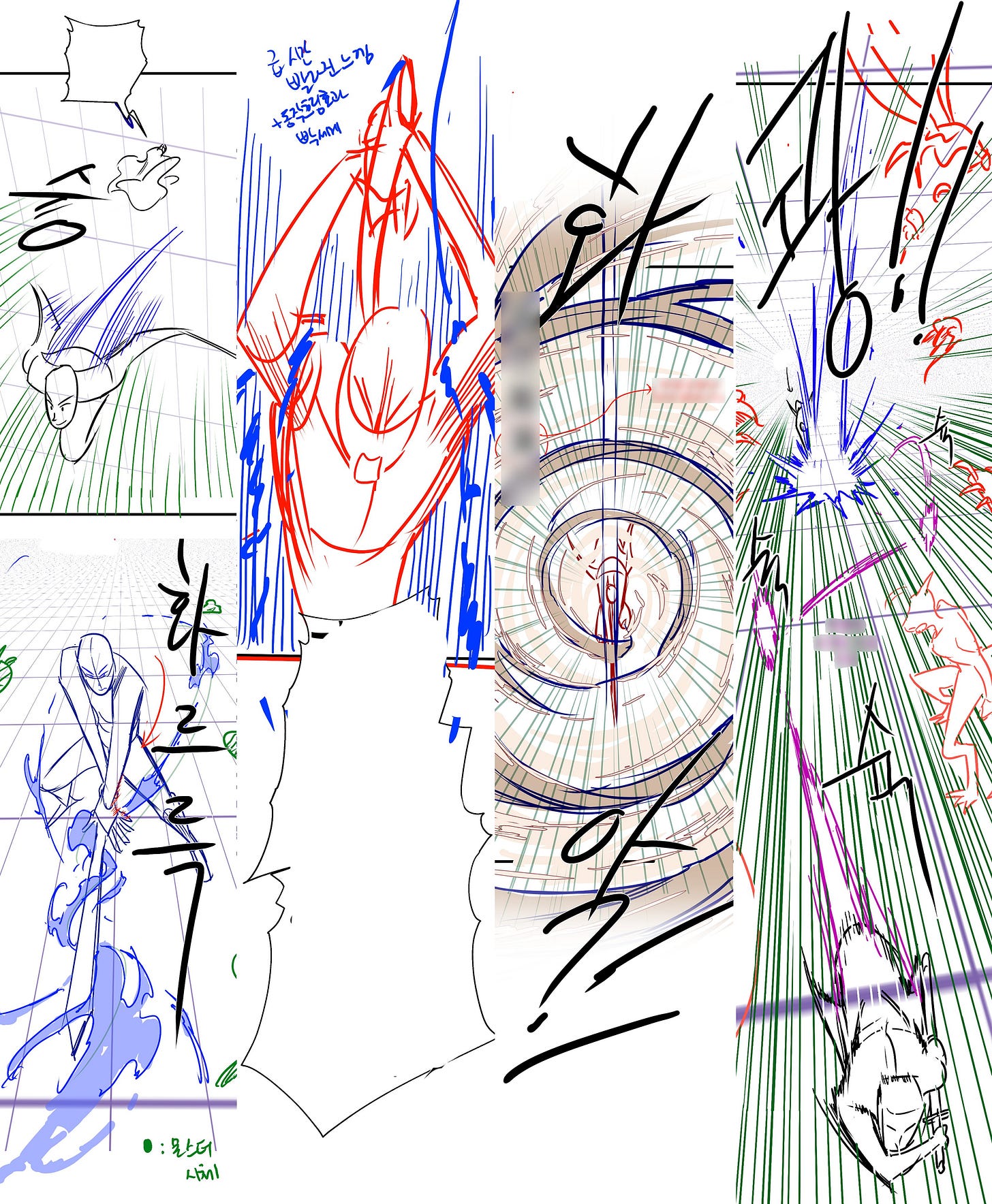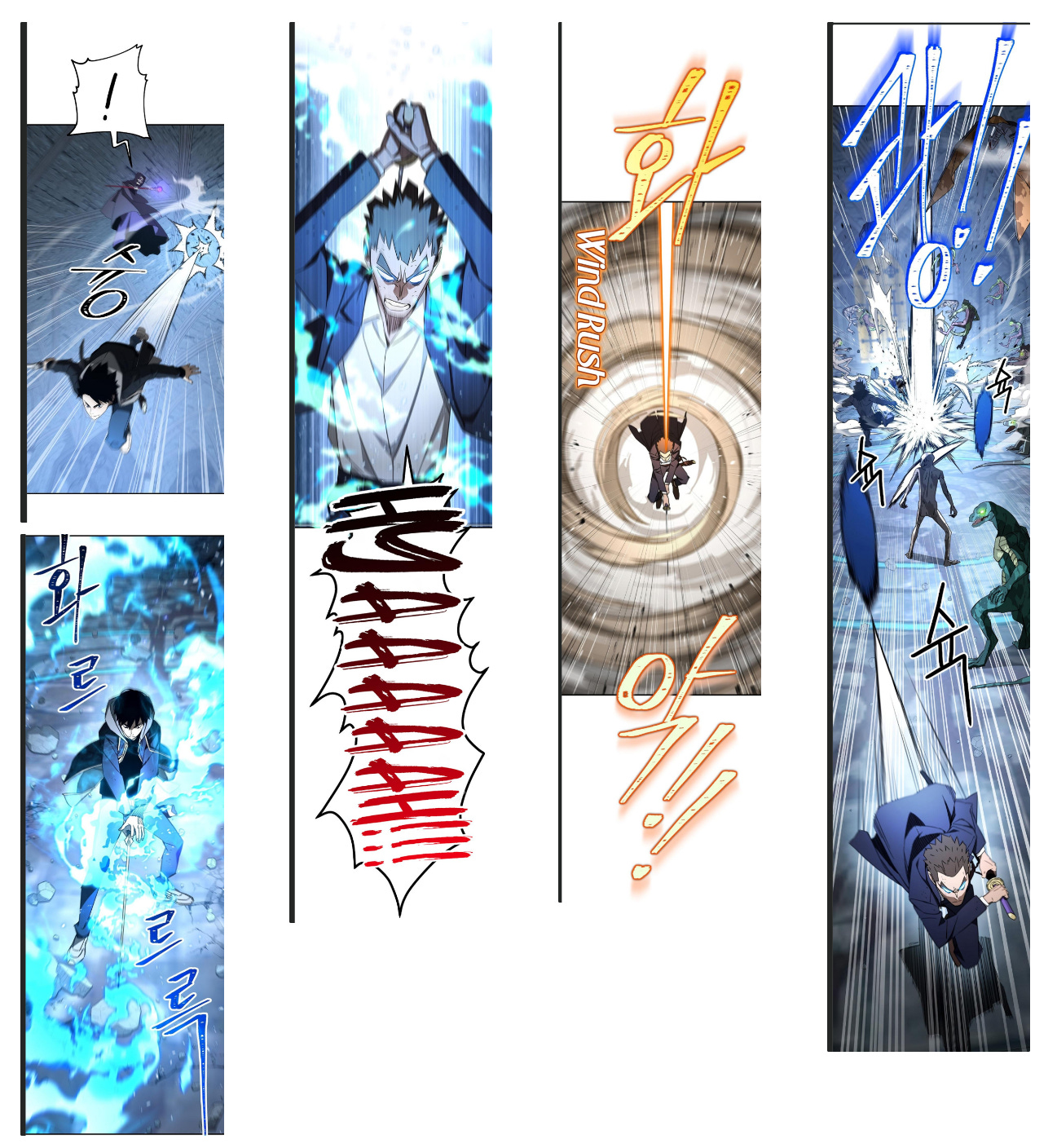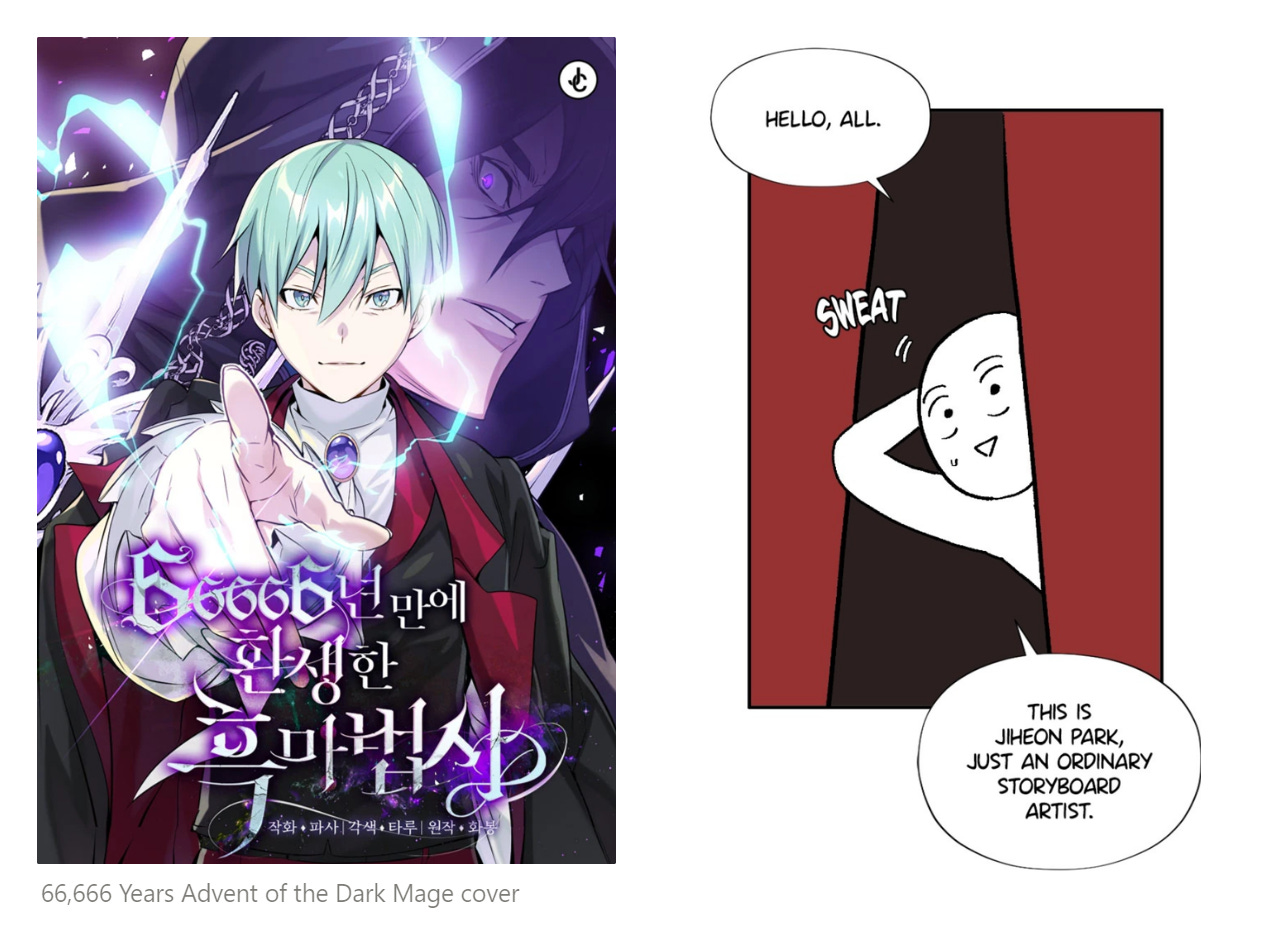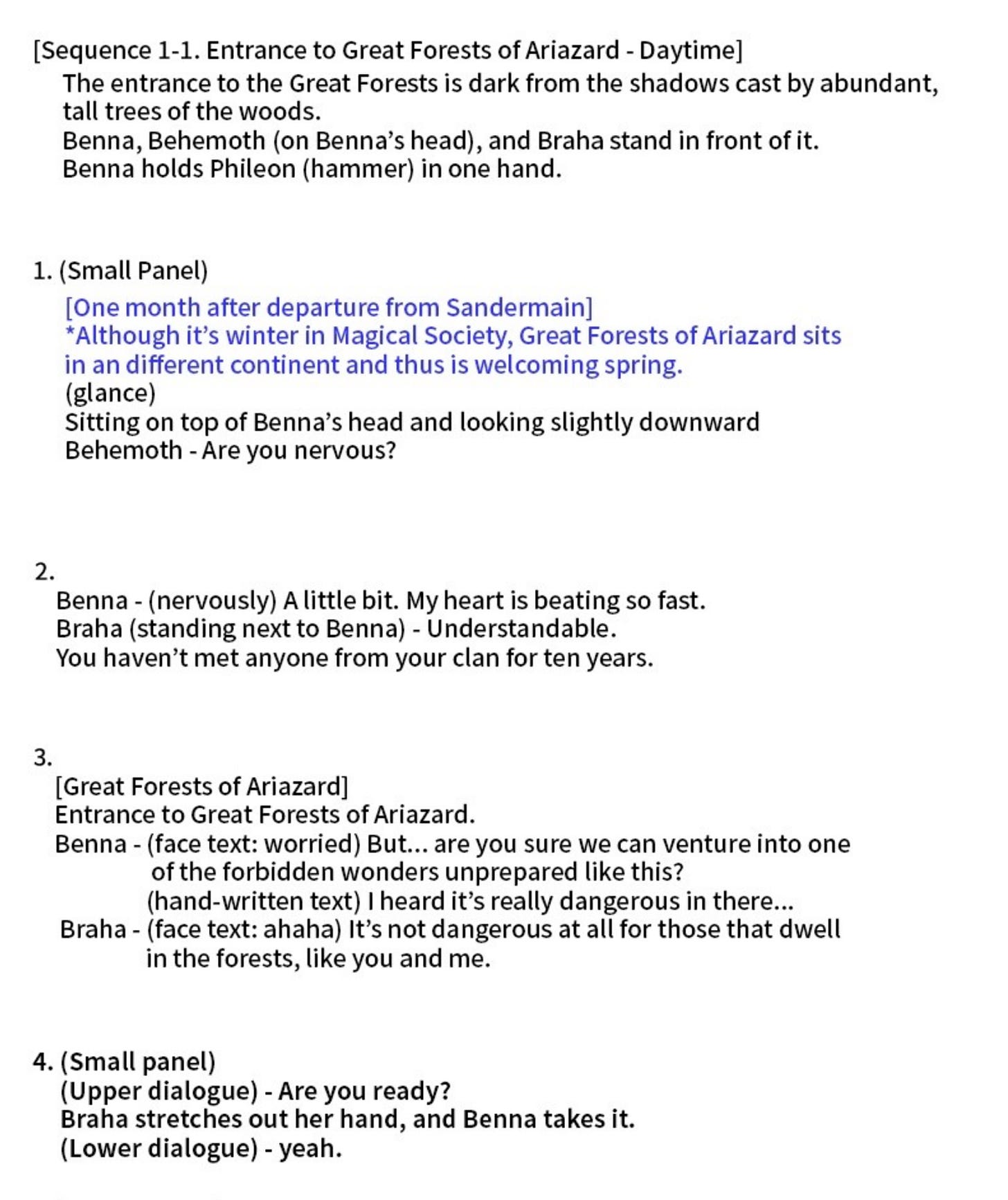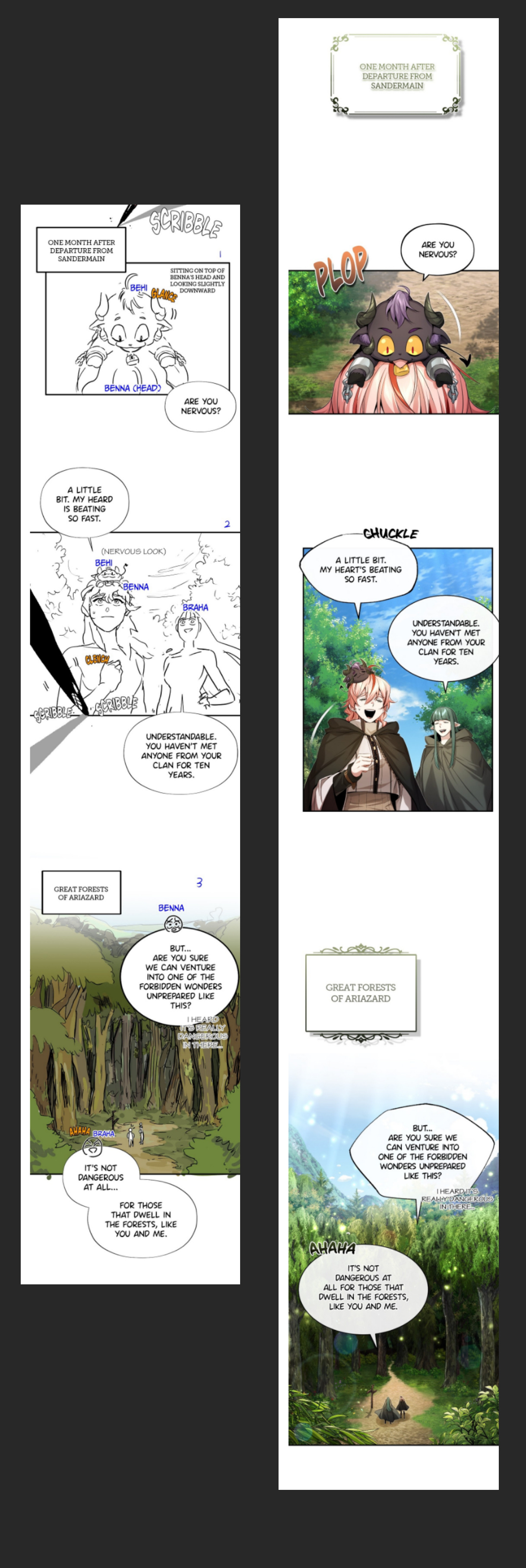Creating Webtoon fight scenes
How series go from scripts to storyboards | The S-Classes that I Raised, 66,666 Years Advent of the Dark Mage, and more
I’ve always wanted to know what goes on behind the scenes of making an acclaimed South Korean action webcomic (manhwa). But, as someone who doesn’t speak Korean, it can be hard to find content that breaks down the manhwa creation pipeline. However, I recently came across two first hand sources from South Korean action story board artists. These resources aren’t tutorials or how-to guides, but they come from professionals who work in the field today, so to me they’re just as valuable. In this post, I’ll share these two manhwa resources and analyze how you can use these workflows in your own comic creation process.
Disclaimer: I’m not a webcomic creator, but in Summer 2020, I interned out of Webtoon’s USA headquarters as a content editor. That is to say, I’m not an expert but I know a little more than the average rando at a comic book convention about what goes in to making a vertical scroll comic.
In this post:
Action Webtoon thumbnails by Jinggae
My Observations
S-Classes that I Raised - Storyboards
The Hero Returns - Storyboards
66,666 Years Advent of the Dark Mage - Behind the Scenes
Script, Storyboard vs. Final product
More Observations
Action Thumbnails by Jinggae
The first section is a series of thumbnails by South Korean webtoon storyboard artist Jinggae, posted on their Twitter account. They’ve worked on action webcomics like The S-Classes that I Raised, Trophy Husband, and The Hero Returns. I couldn’t find their personal website but here is a link to their Twitter profile.
In this section, I’ve taken Jiggae’s storyboards and found the corresponding finished panels in the manhwa for:
S-Classes that I Raised
The Hero Returns
As you look through the storyboards - keep an open mind. What patterns do you notice? When you’re done, read through my observations section to see how our takes differ. At the end, I’ll tell you what I noticed about the way they and their team create an action storyboard.
S-Classes that I Raised
Left hand side are the storyboards, right hand side is the final published copy.
The Hero Returns
I could not find an official source for the English translation of the manhwa. Here is the scalation site that I referenced. These panels are not in order and span between chapters 19 to 22.
Thumbnails
Final Version
Jinggae’s Storyboards - My Observations
These are the cleaned up thumbnails to be sent to the art team. This is one step past the quick paneling stage where you just try to get your thoughts out on the page as fast as possible.
The panels are numbered, likely to correspond to a script.
Colors are used to distinguish between characters, backgrounds, action lines, and action effects. In some sequences, different colors are used to indicated different power types. Like in the S-Classes sequence - one character has ice powers (blue) and the other has lighting powers (yellow). Besides that, character outline colors can change between panels.
Use of the perspective grid / ground plane in thumbnails to indicated where the floor or ceiling is.
Perspective is one of the most useful tools to create the illusion of depth. It's a quick, easy shorthand to establish the camera height and to give a sense of depth within the frame. A drawing without a perspective grid leaves room for interpretation and might indicate a camera height that you don't intend.
I’m guessing they use a simple grid asset like this one grid - CLIP STUDIO ASSETS (clip-studio.com) and use the warp tool to position it in perspective.
Speech bubbles are laid out with their text in them. Sound effects are drawn in roughly to give the letters a sense of where to place everything for the finished product.
I was surprised that **focus lines** are used in the thumbnail stage but that makes a lot of sense.
3D images and pictures are used when it makes more scene than drawing it out like this one and this one from Trophy Husband.
Flash back sequences use the old panel art. See the blurred out panels in the second column above.
Text like name of the characters and descriptions are used to tell the art team more about what is going on in the scene.
The storyboards are a guide. Each art team has their own art styles that they go with. In some sequences the panels are more spread out or the speech bubbles are given more space. The art team100% follow the thumbnails like it is the law, instead they often make their own creative decisions where and when it makes sense.
66,666 Years - Behind the Scenes
The webcomic 66,666 Years Advent of the Dark Mage chapter 102 has notes on the process of turning a webnovel into final comic. This chapter is written by a South Korean webtoon storyboard artist who works on the series named Jiheon Park.
In this chapter, Park breaks down how a webnovel like Webcomic 66,666 Years Advent of the Dark Mage is broken down and made into a webcomic by a team. Compared to Jinggae’s section above, this resource breaks down the entire webcomic creation process. Not just the storyboards.
The script
Afterword, the script is handed off to the storyboard artist. In this case it is the author of the short, Jiheon Park. Here’s what that script looks like:
The boards. From thumbnails → Final.
More observations
It takes a team of people to work on a novel so large.
The script writing, storyboarding, and art teams are all separate. Its not one person doing everything.

